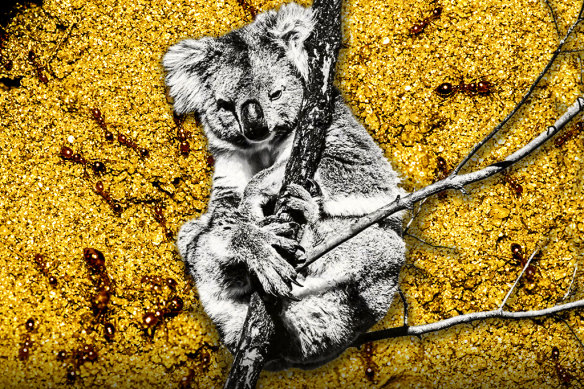
Koalas, platypuses, echidnas, turtles, birds and other native species face a deadly threat if an outbreak of venomous fire ants is not eradicated.
The federal Environment Department has told a parliamentary inquiry that fire ants – whose bite can cause severe and, in rare cases, fatal allergic reactions in humans – can injure and kill Australian wildlife, particularly defenceless hatchlings.

Fire ants can sting native wildlife to death.Credit: Monique Westerman.
Fire ants invaded south-east Queensland in 2001 and are threatening to gain a foothold in other states. Incursions have been detected in NSW, Victoria and Tasmania in the past year.
The department said the venomous pest, which is native to South America, could deliver painful bites to animals’ eyes, noses and mouths.
Arboreal animals such as koalas risked being stung and killed by ants as they travelled across the ground, while turtles, including threatened loggerheads, were also in danger.
“[Fire ants] may kill and injure vulnerable hatchlings, and are attracted to nests by the mucous and moisture released by a laying female,” the department’s submission, published last week, said.
Loading
Nest-bound hatchlings of platypuses and short-beaked echidnas could be killed by swarming fire ants “given they shelter in terrestrial dens and are unable to protect themselves or flee”, while birds that nested low in trees or on the ground, including the bush stone-curlew, black-breasted button-quail, little tern and rainbow bee-eater, were also at risk.
Carnivorous marsupials, such as the spotted-tail quoll, that fed on larger invertebrates might be affected due to declines in their food source, the department said.









 Add Category
Add Category